Is your cat always underfoot when you’re near the food bowl, or does its food seem to sit untouched? You might be surprised how much a proper feeding schedule can transform your cat’s health and happiness.
The answer is that most cats thrive on a consistent routine of two meals a day. A well-structured feeding schedule is essential for your cat’s overall well-being.
- Most cats thrive on a routine of two meals a day for health and happiness.
- Kittens need 4-6 small meals daily due to rapid growth and developmental needs.
- A 12-hour interval between meals is ideal for most adult cats.
- Senior cats may benefit from smaller, more frequent meals to aid digestion.
Let’s delve into the vet-recommended best practices, so your cat can live its best life.
The information provided herein is for informational purposes only. Please refer to our disclaimer for more details..
- Kitten Feeding Frequency: Why Small Meals Matter
- Adult Cat Feeding Frequency
- Senior Cat Feeding Frequency
- Factors Affecting Feeding Frequency
- What Sort of System Should I Use for Feeding My Cat?
- The Impact of Routine Feeding Schedules
- Practical Feeding Tips on How Often to Feed Your Cat
- Potential Issues with Inconsistent or Improper Feeding Frequency
- Transitioning Feeding Times
- How Much to Feed Your Cat: Type of Food and Portions
- Conclusion: How Often Should I Feed My Cat?
Kitten Feeding Frequency: Why Small Meals Matter
Kittens experience extraordinary growth spurts. Small, frequent meals supply the constant fuel needed to support their development.
Kittens can only handle a limited amount of food at each feeding. Multiple meals ensure they receive enough nutrition without overwhelming their digestive systems.
Young kittens are prone to hypoglycemia (low blood sugar) if they go too long between meals. Frequent feedings keep energy levels stable.
Age-Specific Guidelines
- Under 6 months: Aim for 4-6 meals spread evenly throughout the day. This could mean feeding approximately every 3-4 hours.
- 6-12 months: As your kitten grows, you can gradually transition to 3 meals a day. Space meals further apart as they get older within this range.
Important Considerations
If you are bottle-feeding, consult with your veterinarian about a proper weaning schedule and when to transition to solid pet food. Always use vet-recommended kitten food.
Monitor your kitten’s appetite and food intake. Some kittens may need even smaller, more frequent meals, especially in the very early stages.
Even with multiple feedings, avoid leaving food out constantly. Offer small, appropriate portions at each mealtime.
Remember: Each kitten is unique. It’s best to consult your veterinarian for the ideal feeding schedule tailored to your kitten’s specific needs.
Adult Cat Feeding Frequency
In the wild, cats tend to hunt and consume smaller prey multiple times a day. Two meals spaced out provide a similar pattern.
A 12-hour interval between meals generally keeps most adult cats satiated while preventing extended periods with an empty stomach. It’s crucial to understand how long cats can go without food, to prevent any health issues.
Regular mealtimes promote proper digestion and can reduce the risk of an upset stomach due to prolonged fasting.
The Case for Once-a-Day Feeding
This schedule may be easier to fit into a busy owner’s lifestyle.
- Potential for Weight Management: Some cats may be able to better self-regulate their intake when offered a larger, single meal.
- Suitable for Some Cats: This can work well for cats who are not prone to overeating or scarfing down their food.
Monitoring is Crucial
Regardless of whether you feed once or twice a day, paying attention to your cat’s weight and behavior is essential:
- Dramatic weight gain or loss might signal that feeding frequency needs adjustment.
- Excessive begging between meals could indicate your cat isn’t getting enough at feeding time.
- Vomiting on an empty stomach suggests longer gaps between meals may not be suitable.
- If your cat becomes more or less active, food intake and frequency might need modification to match.
It is always a good idea to discuss any major changes in your cat’s feeding routine with your veterinarian, especially if once-a-day feeding is something you’re considering.
Senior Cat Feeding Frequency
Older cats might need a different diet. Smaller, more frequent meals are often a great solution for senior cats. This helps them digest their food more easily and keeps their energy levels stable throughout the day.
Instead of the standard two meals, you could try splitting their food into “three or four smaller portions”. Consult your vet for the best frequency based on your senior cat’s health.
Every Cat is Different
Remember, every senior cat is unique! Some might still thrive on two meals a day, while others truly benefit from the smaller, more frequent approach. Monitor your senior kitty closely and adjust their feeding schedule based on their individual needs.
Consider switching to a senior-specific food. These formulas may have adjusted protein levels, added nutrients for joint health, and other modifications to support an aging cat’s well-being.
Vet Tip: Regular checkups are even more important for senior cats. Your vet can help you adjust your cat’s diet and feeding plan as they age.
Factors Affecting Feeding Frequency
While age provides a good guideline, several other factors can influence how often to feed your cat:
- Activity level: Highly active cats burn more calories and might benefit from slightly more frequent meals. Conversely, very sedentary cats may need a slightly less frequent feeding schedule to maintain a healthy weight.
- Health conditions: Diseases like diabetes, hyperthyroidism, kidney problems, and others can significantly impact a cat’s dietary needs, including meal frequency. Always work closely with your veterinarian to determine the best feeding plan for a cat with health issues.
- Body condition: The optimal feeding frequency goes hand-in-hand with keeping your cat at a healthy weight. Regularly monitor your cat’s body condition and consult your vet if they start to get overweight or underweight. Adjustments in meal frequency may be needed.
Your Schedule
Your lifestyle can also play a role in determining your cat’s feeding routine. Consider these scenarios:
- Hectic Mornings: If your mornings are rushed, feeding your cat in the evening when things are calmer might be a better option for you.
- Active Evenings: If you find yourself busy with activities or errands in the evenings, try feeding your cat in the morning before your day gets going.
- Flexible Schedule: If your schedule is more adaptable, you could try splitting meals between morning and evening to accommodate your needs.
Multi-cat Households
With more than one cat, establishing feeding routines can be trickier. Some cats might not come when called, making it difficult to control when or how often they eat. In these cases, feeding cats separately or in different areas of the house can help ensure each cat is getting the right amount of food without being overfed or missing meals.
The key is to find a schedule that is both manageable for you and ensures your cat’s nutritional needs are met. Maintaining a consistent feeding routine as much as possible benefits your cat’s overall health and well-being.
What Sort of System Should I Use for Feeding My Cat?
The most common feeding strategies include free feeding, scheduled (meal) feeding, and a combination of both. Understanding the benefits and drawbacks of each can help you decide the best approach for your feline friend, especially considering their health status, lifestyle, and dietary needs.
Free Feeding
In this approach, food is available to your cat at all times, allowing them to eat whenever they wish. This method is typically suitable for dry food, as it doesn’t spoil easily.
- Advantages: It’s convenient for cat owners with unpredictable schedules and suits cats that prefer to graze, eating small amounts throughout the day.
- Disadvantages: It can lead to overeating and obesity, especially if the cat lacks self-regulation with their food intake. It also makes monitoring food intake and health changes challenging, particularly in multi-cat households.
Scheduled Feeding (Meal Feeding)
Scheduled feeding involves providing meals at set times each day, which can be beneficial for monitoring food intake and ensuring dietary consistency.
- Advantages: Allows closer monitoring of appetite and food intake, useful for managing weight and identifying health issues early. It ensures all cats in the household get their share without competition.
- Disadvantages: It requires a consistent routine and might not suit everyone’s lifestyle. Some cats may also display begging behavior or become overly fixated on meal times.
Combination Feeding
This method blends both free feeding and scheduled feeding, offering dry cat food available throughout the day and scheduled wet cat food meals.
- Advantages: Offers flexibility and ensures that the cat benefits from both wet food (canned food) and dry food. It accommodates cats who graze and those who enjoy regular meal times.
- Disadvantages: Like free feeding, it can lead to overeating and increased body weight if not carefully managed. It requires careful monitoring to ensure that the cat is not consuming too much daily food.
The Best Choice for You
The right method will depend on several factors:
- Your cat’s personality: Is your cat a grazer or will they eat an entire serving at once?
- Health: Does your cat need to maintain a healthy weight or have underlying health issues?
- Activity: Is your kitty indoor cat or an outdoor cat?
- Your lifestyle: Can you commit to consistent feeding times?
- Multi-cat household: Scheduled or portion-controlled feeding might be essential to ensure each cat gets their fair share.
If you opt for free feeding, it’s vital to measure out a daily amount of food and stick to it, rather than simply refilling the bowl.
The Impact of Routine Feeding Schedules
Establishing a consistent feeding schedule does wonders for your cat’s well-being, both physically and behaviorally. Here’s why:
- Behavioral Stability: Cats are creatures of habit. Predictable mealtimes provide a sense of security and can reduce stress-related behaviors like excessive meowing or food-related aggression.
- Easier Dietary Transitions: If you ever need to switch your cat’s food (due to age or health reasons), a solid feeding routine makes the transition much smoother.
- Managing Health Issues: For cats with health conditions like diabetes, regular feeding schedules are crucial for managing their condition through medication or special diets.
- Monitoring Health: A consistent routine helps you quickly spot any changes in your cat’s appetite or eating patterns, which could be early signs of illness.
If possible, try to space out your cat’s meals to occur around the same times each day. This helps regulate their appetite and keeps them satisfied!
Practical Feeding Tips on How Often to Feed Your Cat
Keeping the same feeding times and portion sizes each day helps regulate your cat’s appetite and digestion. Food puzzles provide mental stimulation and can help slow down fast eaters, preventing overeating.
Track your cat’s weight regularly. Unexpected weight loss or gain can be a sign of underlying health changes that may require dietary adjustments.
To avoid underfeeding, always feed the amounts recommended on the packaging.
Signs of underfeeding include:
- Visible ribs
- Prominent waist when viewed from above
- Poor nutrition, reflected in their coat
To check if your cat is overweight, you can put your hands on your cat and feel the fat on their body. You should still be able to easily feel bones and flesh underneath.
Potential Issues with Inconsistent or Improper Feeding Frequency
Think your cat can handle deciding when it needs to eat? Think again! It’s crucial to have a set feeding schedule for your cat, and here’s why:
- Overeating and Obesity: Free-feeding (leaving food out all the time) is a major culprit in cat obesity. Cats may simply keep nibbling out of boredom, leading to serious health problems.
- Behavioral Problems: Cats who are constantly hungry or have unpredictable mealtimes can become anxious or stressed. This might manifest as begging, excessive vocalization, or even aggression.
- Nausea & Digestive Issues: Going too long between meals can cause a cat’s stomach to become overly acidic, leading to nausea and vomiting. Regular feedings help maintain healthy digestion.
Friendly Vet Tip: A consistent feeding routine is one of the best things you can do for your cat’s overall health and well-being. It might take some adjustment, but your feline friend will thank you for it!
Transitioning Feeding Times
Cats thrive on routine, so any change to mealtimes should be done gradually. This helps avoid tummy troubles and gives them time to adjust.
Changing Mealtimes
If you need to adjust feeding times, do it incrementally – maybe 15-minute shifts each day until you reach the desired schedule. If your cat acts particularly hungry or starts begging incessantly, you might need to slow down these schedule adjustments.
Let’s say your cat usually eats at 7 AM and 6 PM, and you want to switch to 8 AM and 5 PM. Here’s how you could do it:
- Day 1: Feed at 7:15 AM and 5:45 PM
- Day 2: Feed at 7:30 AM and 5:30 PM
- Day 3: Feed at 7:45 AM and 5:15 PM
- Day 4: Feed at 8 AM and 5 PM
How Much to Feed Your Cat: Type of Food and Portions
Determining the right amount of food for your cat involves understanding their unique dietary needs and incorporating various factors. Here’s a concise guide to help you navigate this:
Types of Food
- Dry Food: It’s high in calories; hence, it’s essential to adhere strictly to the recommended feeding guidelines.
- Wet Food (Canned Cat Food): This option is richer in moisture and typically lower in calories compared to dry food. Begin with the recommended amounts on the food label but adjust as necessary.
Factors Influencing Portion Size
- Age: Growing kittens consume more, while older cats need fewer calories.
- Activity Level: Active cats require more energy, and sedentary cats less.
- Body Condition: Tailor your cat’s food intake based on their need to gain, maintain, or lose weight (especially if you have an overweight cat).
- Veterinary Guidance: Always consult with your vet to determine the precise nutritional needs of your cat.
Practical Tips
- Monitoring: Regularly weigh your cat and adjust food portions to ensure they’re at a healthy weight. Use calorie calculators available on pet food websites to estimate how many calories your cat needs daily.
- Feeding Routine: Understand how much your cat is eating by monitoring their daily food intake—consider both the cup of food per day and the calories per pound of body weight.
- Consistency: Whether you feed your cat dry food or a mix, consistency in how much food you give is crucial. Always monitor how much your cat eats and be mindful of the total calories provided.
Conclusion: How Often Should I Feed My Cat?
By understanding your feline friend’s unique dietary needs and establishing an appropriate feeding schedule, you are setting them up for a long, healthy, and happy life. Remember, give your cat a balanced diet for its well-being.
Your cat’s nutritional requirements may evolve over time due to age, health, or changes in activity level. Stay attentive to their individual needs and be willing to adjust their feeding routines accordingly, especially in consultation with your veterinarian.
Ultimately, the best feeding plan is the one that keeps your cat thriving!
10Kviews
Share on Facebook
 Dark Mode
Dark Mode 

 No fees, cancel anytime
No fees, cancel anytime 






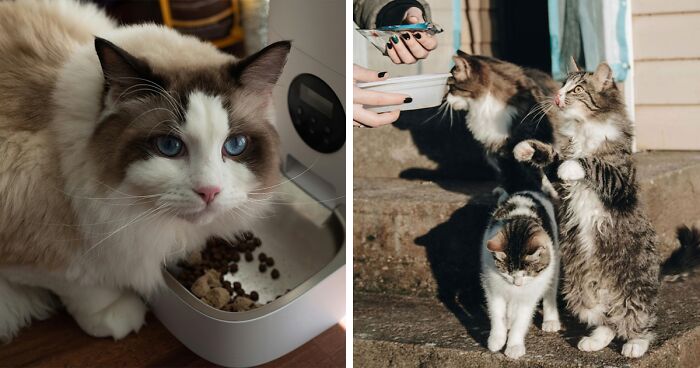
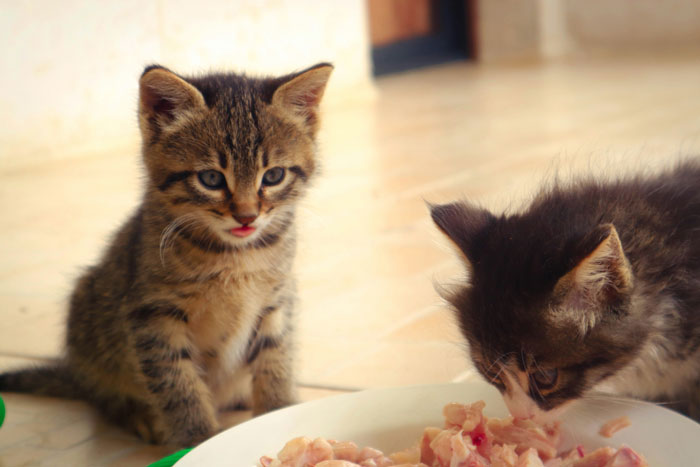 Image credits:
Image credits: 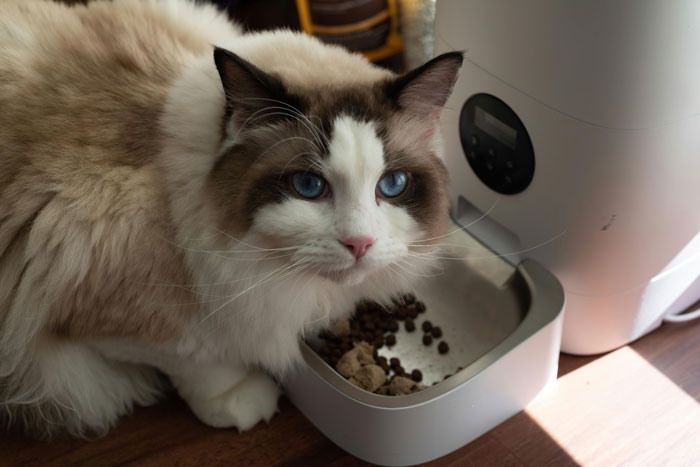 Image credits:
Image credits: 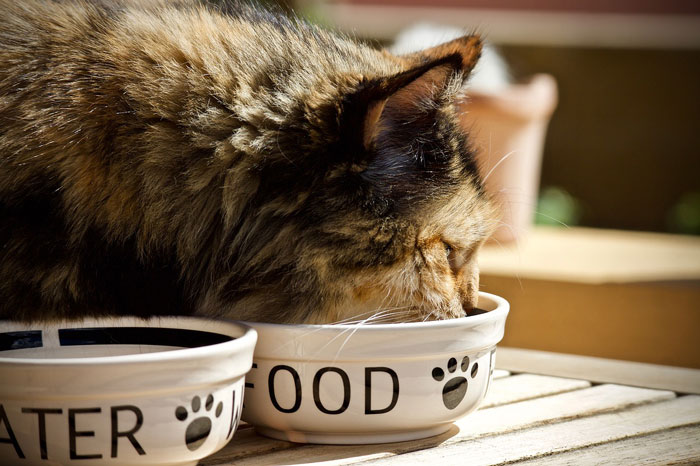 Image credits:
Image credits: 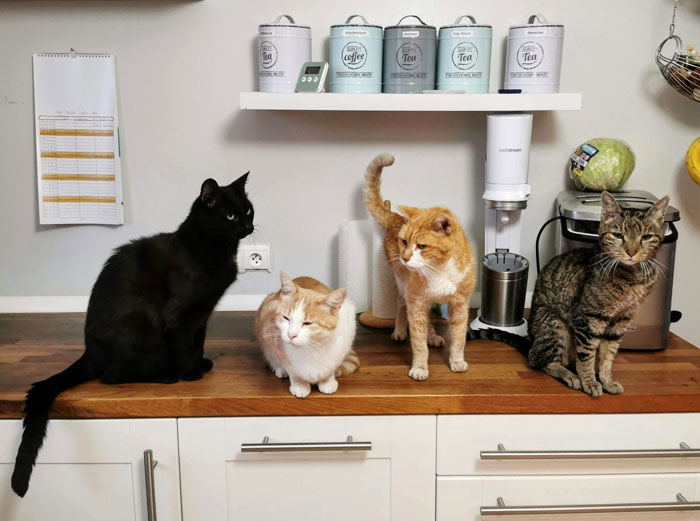 Image credits:
Image credits: 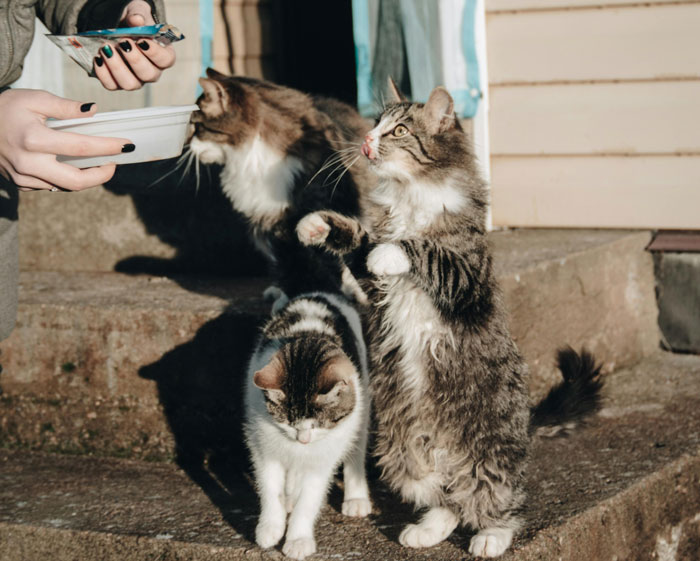 Image credits:
Image credits: 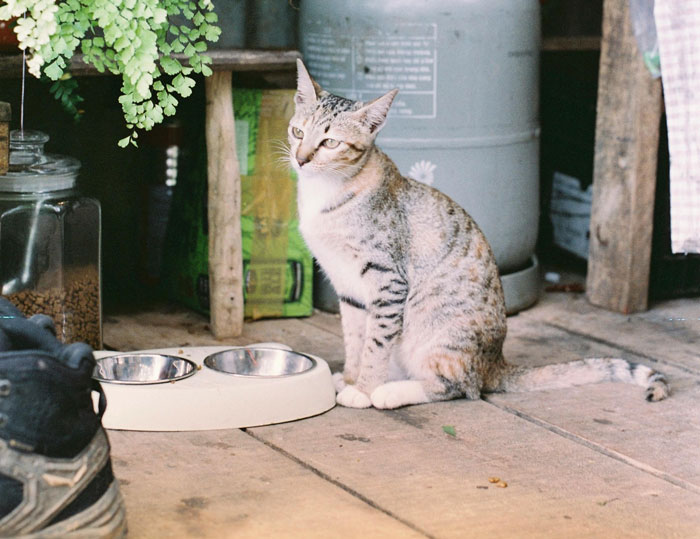 Image credits:
Image credits: 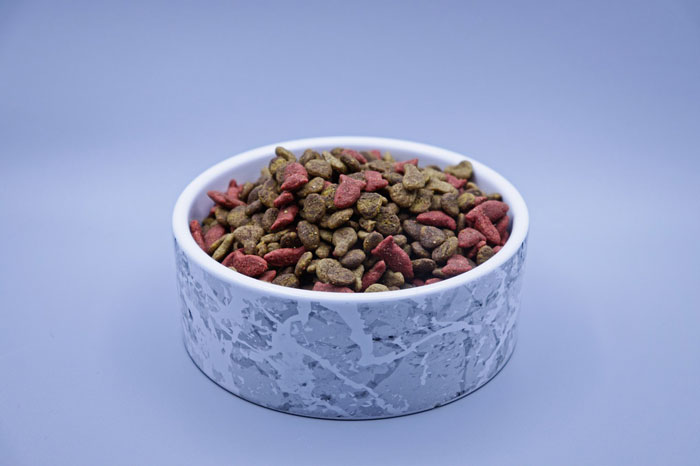 Image credits:
Image credits: 










































-2
0